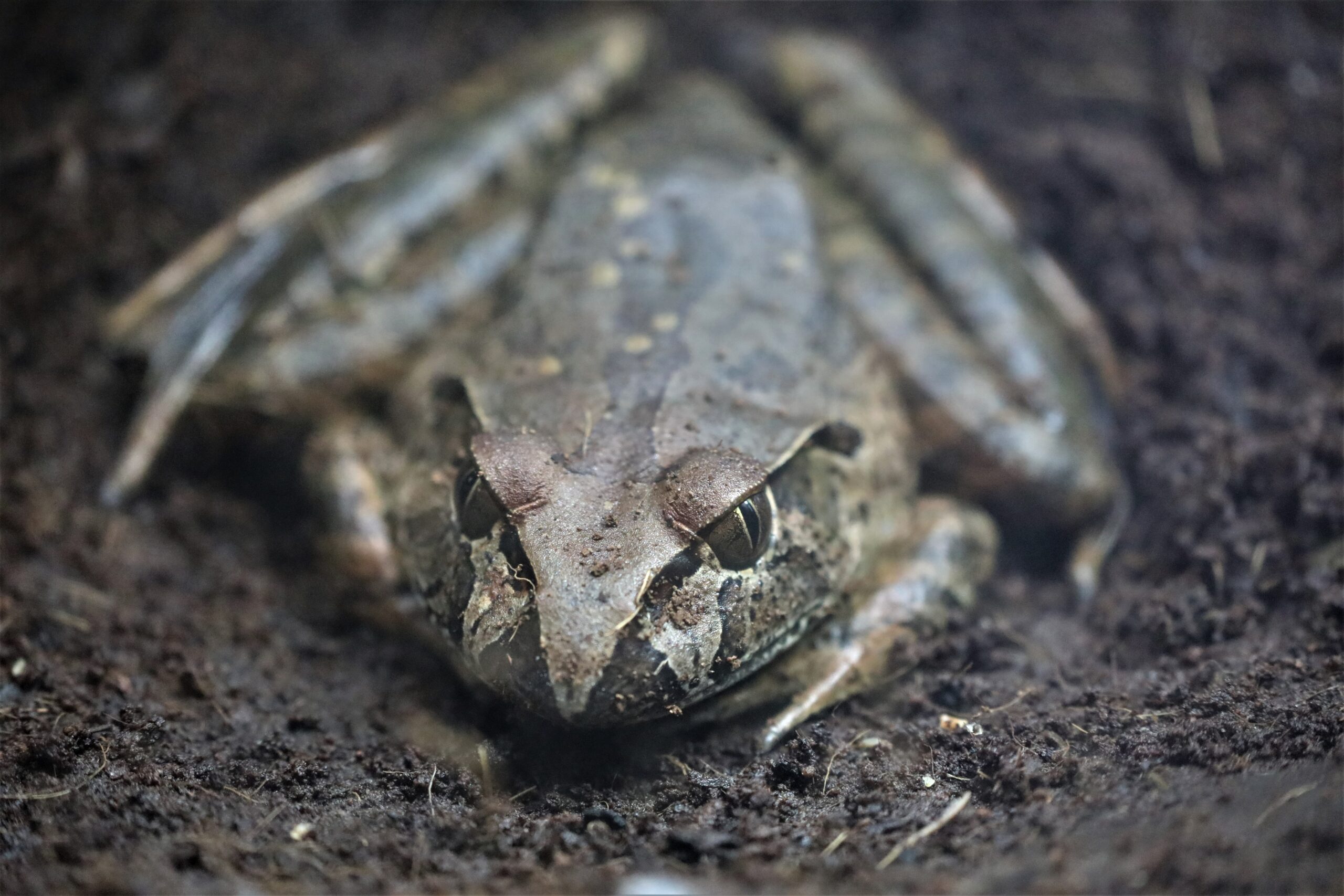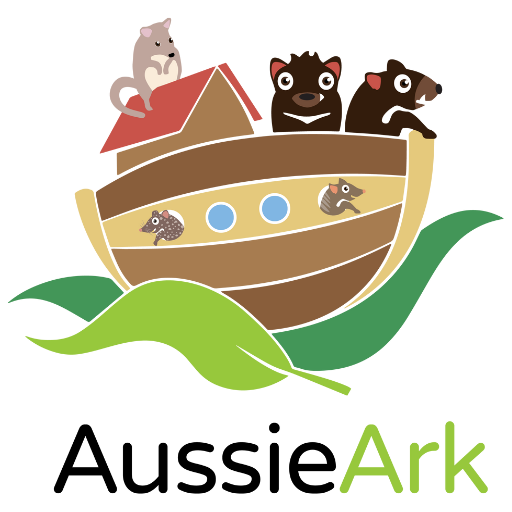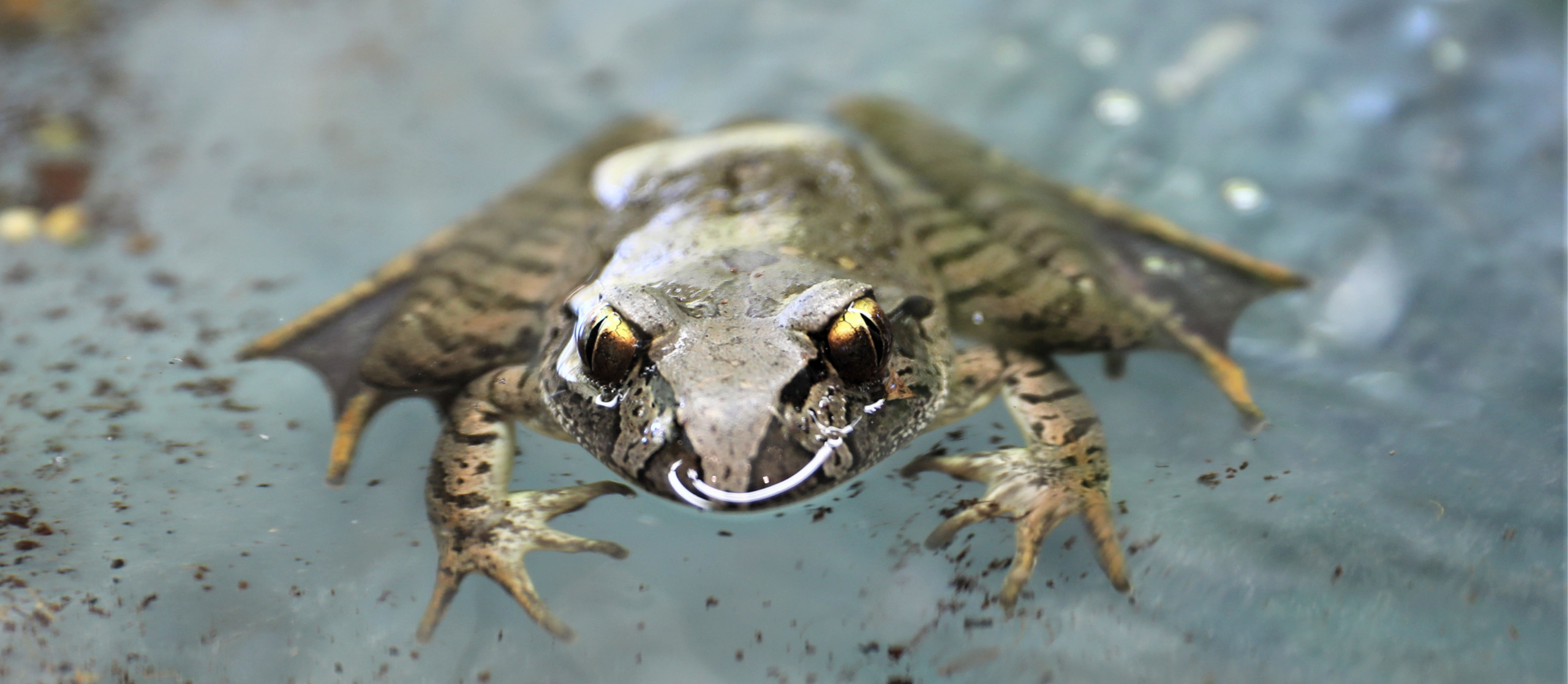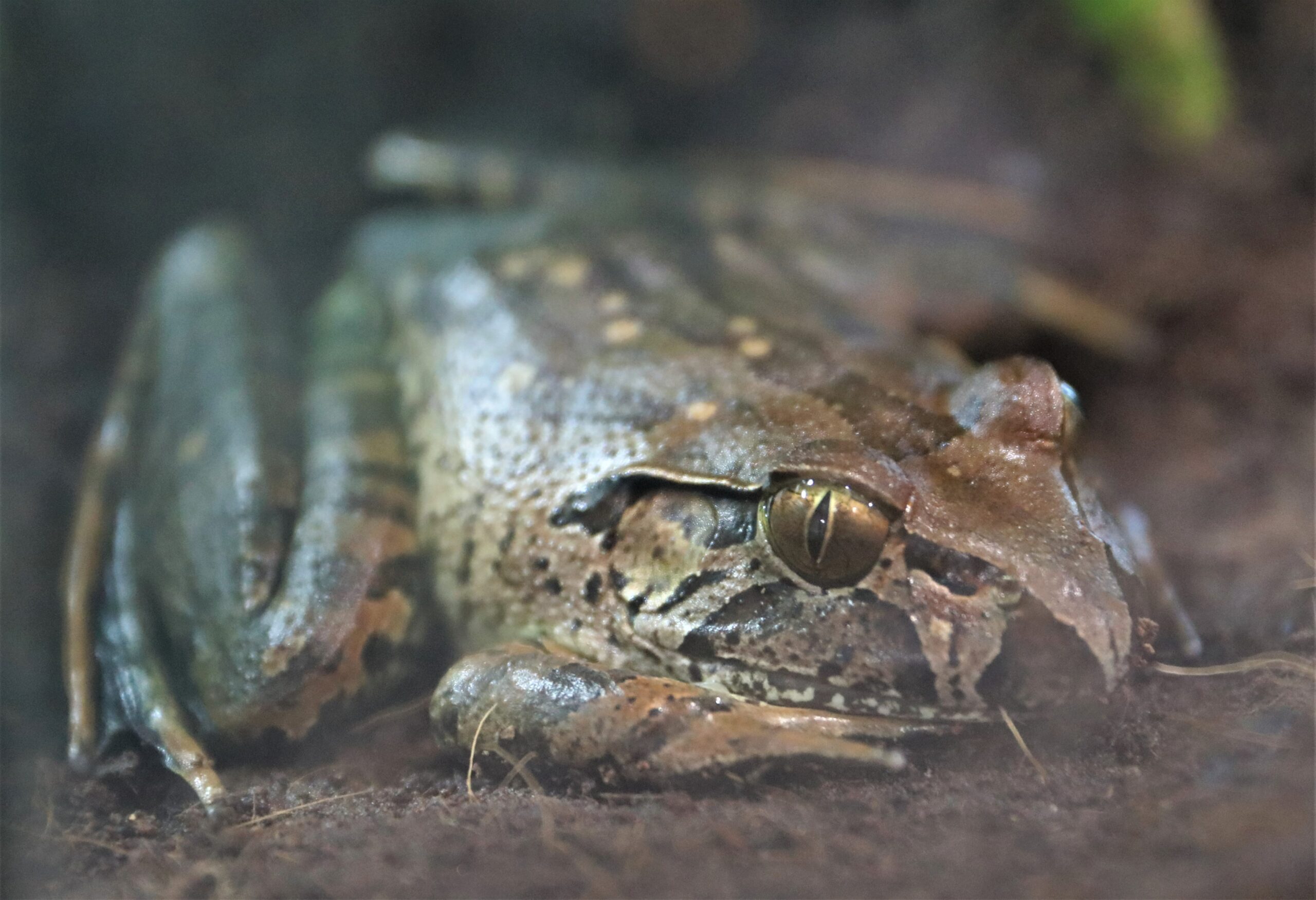22 Mar GIANT BARRED FROG
Scientific name: Mixophyes Ireatus
IUCN Conservation Status: Endangered

Description
Giant Barred Frogs are very large (up to 115mm long) and powerfully built. They are blotched light and dark brown above and are well-camouflaged in leaf litter. Limbs have dark crossbars, and the hind sides of the thighs are black with yellow spots. The pupil is vertical, and the iris is golden. The call is a deep guttural ‘ork’. The Giant Barred Frog can be most easily distinguished from other barred frog species by the call and the distinctive eye colour.
Habitat
Giant Barred Frogs are found along freshwater streams with permanent or semi-permanent water, generally (but not always) at lower elevation. Moist riparian habitats such as rainforest or wet sclerophyll forest are favoured for the deep leaf litter that they provide for shelter and foraging, as well as open perching sites on the forest floor. However, Giant Barred Frogs will also sometimes occur in other riparian habitats, such as those in drier forest or degraded riparian remnants, and even occasionally around dams.
Distribution
The Giant Barred Frog is distributed along the coast and ranges from Eumundi in south-east Queensland to Warrimoo in the Blue Mountains. Declines appear to have occurred at the margins of the species’ range, with no recent records south of the Hawkesbury River and disappearances from a number of streams in QLD. Northern NSW, particularly the Coffs Harbour-Dorrigo area, is a stronghold.
Diet and Behaviour
Although generally found within about 20m of the stream, outside the breeding season, the Giant Barred Frog may disperse away from the stream (e.g. 50m or further). It is a generalist feeder, with large insects, snails, spiders and frogs included in its diet.
Reproduction
Breeding takes place from late spring to summer. Once eggs are laid and fertilised in the water, the female kicks them out of the water where they stick onto a suitable bank (e.g. overhanging or steeply sloped). The tadpoles then drop into the water after hatching. Tadpoles can reach a total length of up to 8.5 cm, and are gold-brown or grey-brown in colour. They often remain on the bottom of water bodies and take around 12 months to develop into frogs. Breeds during spring to autumn after rain.
Threats
They were severely impacted during the 2019/ 20 bushfire disaster and like most Australian frog species also suffer from the impacts of feral predators, climate change and disease, such as Chytrid Fungus. Chytrid is a fungus that primarily affects the skin of a frog and can spread extremely quickly through an ecosystem, but also between ecosystems.
How Aussie Ark is helping
The giant barred frog calls Conservation Ark home, which is a state-of-the-art breeding facility put in to house frog species and turtles at the Australian Reptile Park. Aussie Ark and the Australian Reptile Park will breed the frogs and house them as they develop into fully grown frogs, before releasing them back into streams and waterways in the wild. Beyond this, the organisations are taking part in projects that are looking at the cause and cure for Chytrid fungus.



